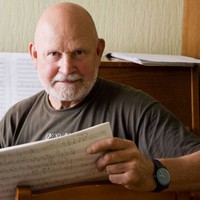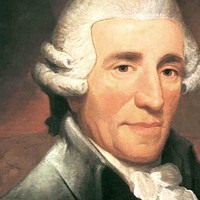Pekka Kuusisto Plays Vasks
Sponsored By
- January 12, 2014

Sponsored By

 Listen to Audio
Listen to Audio
Pēteris Vasks began his musical career as a bass player, performing with ensembles in his native Latvia and neighboring Lithuania. He eventually went back to school for composition, and since the late 1970s he has produced a remarkable body of instrumental music while also training the next generations of Latvian composers at a conservatory in Riga. His international reputation received a huge boost after the violinist Gidon Kremer premiered Vasks’ concerto Distant Light and then recorded the work with his ensemble Kremerata Baltica for ECM Records in 1999. The composer provided the following program note.
I started composing the fantasy for violin and orchestra Vox amoris in fall 2008 and finished the score in early spring 2009. What is the message I wanted to announce? It is about the greatest power in the whole world — love. Love is, was, and will be as long as we will be. I believe that solo violin and string orchestra make the best combination for a “love story.”
The composition, in one single movement, starts with a muted string tremolo. Then the solo violin appears — searching, asking, until it blossoms in a broad melody which is supported by a gentle orchestral accompaniment. The solo violin Cadenza I links the introductory part with the central episode. The central part of the composition is built up from two sound waves. The first wave starts softly, slowly, and then the intensity increases, becomes stronger, and then decreases. The second wave is broader, more dramatic. The solo violin part becomes more challenging; the string orchestra plays an active role here. Cadenza II emphasizes the way to culmination — the highest point is reached when the solo violin and the orchestra meet — in a high register, in the highest intensity. A quiet pedal point is then the background for images from the beginning. The solo violin once again sings a cantilena of the glory of love. The piece ends in a melancholic yet light mood.
Vox amoris was created by initiative of the Australian Chamber Orchestra and its leader Richard Tognetti. I hope this work will reach the listeners and make the world a little brighter and more open to love.
© Pēteris Vasks
Aaron Grad ©2022

Haydn expert H.C. Robbins Landon has pointed out that, by coincidence, Haydn’s first and last symphonies are in the same key (D major), and laying those two works side by side highlights the astonishing distance between them. No. 1 is an aristocratic diversion for small orchestra, lasting little more than 10 minutes, intended for a handful of guests in a palace. No. 104 is a tour de force, about 30 minutes of serious music written for a large, discriminating audience in a public concert hall in London. Clearly, the public event was much more lucrative. After a lifetime in aristocratic service, Haydn made enough from that performance alone to more than triple his estate.
This symphony was the principal offering in Haydn’s last concert in London. From the first bar to the last, it is a work of unsurpassed concentration, invention and consummate mastery. Never one to squander notes, Haydn disdained composers who were spendthrift with ideas:
Once I had seized upon an idea, my whole endeavor was to develop and sustain it in keeping with the rules of art. In this way I tried to keep going, and this is where so many of our new composers fall down. They string out one little piece after another, they break off when they have hardly begun, and nothing remains in the heart when one has listened to it.
Haydn managed to “keep going” here by deriving the germinal ideas of all four movements from the quiet, unassuming opening melody. The Andante and Finale vary the falling opening phrase, while the Menuet echoes the second rising motif. Tying everything together in this way could, in uninspired hands, sound terribly arid and academic. But, as with so many things, this is a case of not what you do but how you do it. Hearing this symphony can be like eavesdropping on a brilliant mind as it tosses ideas around.
The influence of Mozart is felt in the opening bars, where stark unisons and growling timpani share something of the demonic monumentality of Don Giovanni. The energy and drive of the main body of the movement are wonderfully contrasted by the serenity of the slow movement. Beware, though! As in other London symphonies, Haydn explores an expansive and disparate landscape in a set of variations before coming to rest. The Menuet offers a bucolic and good-natured respite before plunging into the melee of the Finale, based on a Croatian folk tune from which Haydn creates a dazzling race to the finish.
Svend-Einar Brown ©2008
Get driving directions and find nearby parking.
Find dining options close to the venue.
View seating charts to find out where you'll be seating.
Get driving directions and find nearby parking.
Find dining options close to the venue.
View seating charts to find out where you'll be seating.
